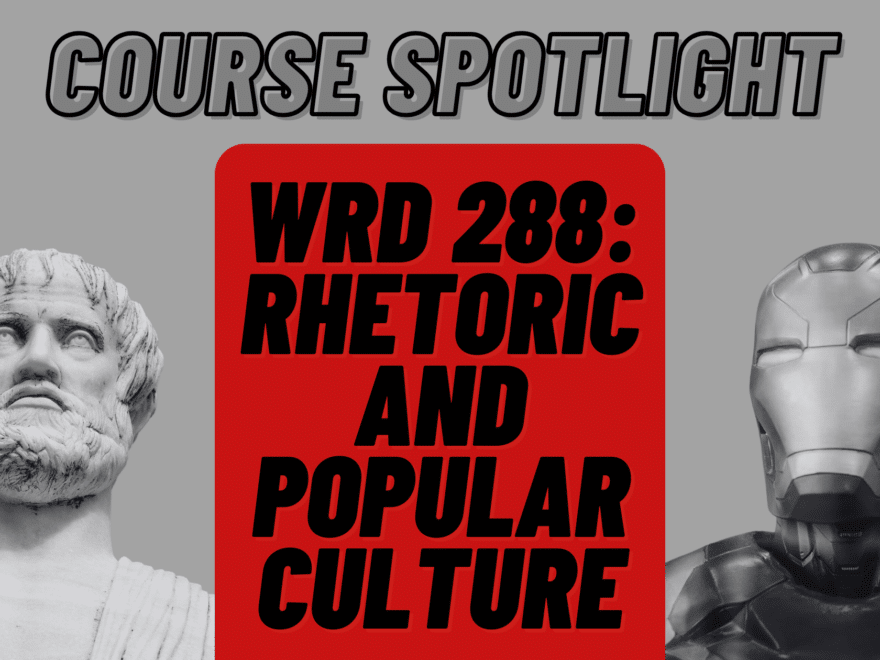At the intersection of The Avengers and Aristotle, WRD 288 Rhetoric & Popular Culture emerges to explore how pop culture shapes and is shaped by the art of persuasion. Taught this Spring Quarter by Professor Justin Staley, this course is your ticket to entertainment and enlightenment in one. Read on to hear from Professor Staley and learn more about what the course entails.
Are there any artifacts or events in pop culture the class will be taking a look at?
What’s fun about this class is the wide range of artifacts and events we examine, or that students can examine on their own: music, art, books/comics, television shows, commercials, movies, restaurants, and more. But we’ll also look at general (and recent) pop culture phenomena like Taylor Swift (and the football guy she’s dating), Barbenheimer, AI, and even ephemeral gifs and memes. So while there are areas that we will certainly focus on, we’ll also have the freedom and flexibility to discuss pop culture events as they happen.
Do you think one aspect of pop culture affects rhetoric more than another?
There are some aspects of pop culture that might be more visible or prominent than others, but the class is interested in how the rhetoric surrounding pop culture affects our perception of it, especially in determining “value.” The way critics write about things sort of melds reputation, prestige, time, and cultural context, along with hundreds of other factors and influences. It’s fascinating what we consider to be worthwhile art, and what we consider to be unworthy of that distinction. The class encourages students to think deeply about how writers and speakers draw conclusions about art and how the cultural values embedded in creative works connect with (or challenge) prevalent social, political, economic, and racial ideas.
What major projects should students expect to do in this course?
Our biggest assignment in class will be for students to create a review in any style or genre they choose. They might choose to review a short comic, a podcast, an album, a film or television show, and much more. Students will have the option in this assignment to choose the format or modality of this review, for example, a purely textual review, a podcast, or a video, keeping in mind the benefits and drawbacks to working in different media.
What is your favorite part of this course to teach?
The first time I taught the course, I was most looking forward to teaching music and music reviews. Students had a lot of fun writing about bands and songs they love, and we ended up creating a Medium site about some of our favorite songs, and even turned the songs into Spotify and Apple playlists.
I was surprised at how much students (and I) enjoyed our discussion of restaurant and food reviews, so I’ll be fleshing that out as a more prominent part of the spring quarter class.
Have you taught this class before? If so, how have the topics changed?
I first taught the course in Autumn ’22, so this will be my second time teaching it. One of the best, and most challenging parts of the course is how ephemeral pop culture can be. The course needs to be fluid in order to capture this and stay culturally relevant, so to speak. But while the course will always have an ongoing dialogue about current cultural trends, the spirit of the course will remain the same regardless of how culture and cultural artifacts change.
Anything students should know before coming to class in week 1?
I think it’s important to drop the pretense about what we think is “good” or “not good” in a wider cultural context. Throw your taste out the window.
Final Thoughts…
Ready to apply your rhetorical knowledge to the world around you? This Spring Quarter, enroll in WRD 288 Rhetoric and Popular Culture with Professor Staley to walk away with a new eye towards decoding the rhetoric in memes, movies, media, and more.
